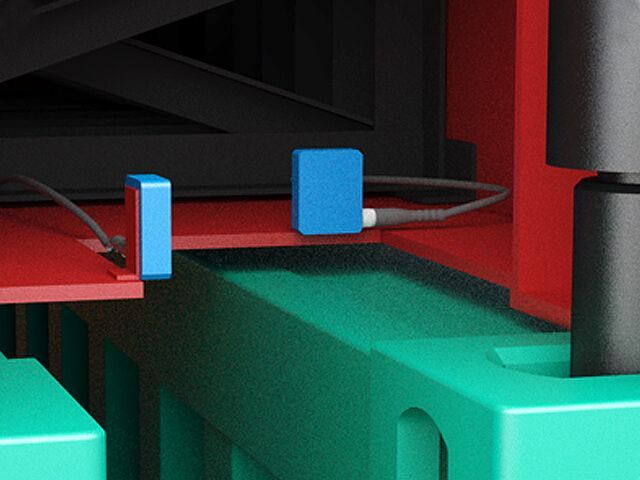Summary
At busy container seaports, purpose-designed container-handling vehicles operate around the clock, loading, unloading and stacking containers. Space utilization is increasingly important and correctly identifying the size of container picked for each lift is essential. Fitting vehicles with sensors that detect the container size eliminates the need for drivers to carry out identification checks, saving time and avoiding errors.
Customer Values
- Optimal space utilization with little or no reliance on operator intervention
- Elimination of calibration errors during normal operation
- Significantly reduced maintenance costs
- Reliable operation in a highly demanding and harsh environment
Specific Product Advantages
- All-electronic device with sensing range up to 500mm
- Large sensing range available in physically small sensor
- Exceptional resistance to extreme vibration during operation
Customer Application
A fleet of straddle carriers, purpose-designed container-handling vehicles, services a busy French container port. As a straddle carrier moves over a container, a central lifting beam lowers and locks onto the corner castings of the container; each lift comprises either a single 40-foot container or two 20-foot containers. Optimal utilization of storage space is essential; correctly identifying the size of container picked for each lift is vital. Fitting carriers with sensors that detect the size and type of containers at the time of lifting eliminates the need for drivers to carry out identification checks, saving time and avoiding errors. The original mechanical sensors proved unreliable, losing calibration when subjected to continuous vibration during normal operation. Although the scheduled maintenance interval for each vehicle is 1,000 hours, mechanical sensors required recalibration at intervals of no more than two or three days. A highly stable replacement sensor system was required.
Customer Solution
Highly stable, all-electronic units from the Contrinex range of photoelectric sensors provide a reliable and cost-effective alternative. The molded-resin sensor casings, fitted with coated-plastic sensing faces, are rated to IP67, making them virtually impervious to the harsh, salt-laden environment of a busy container port. Connection to the vehicle’s control systems is via an integral M12 connector and PVC-sheathed cable, allowing easy removal and replacement during routine maintenance.
To confirm the size of container, two pairs of diffuse sensors with background suppression from the Cubic Small range are mounted centrally on each lifting beam. As the lifting beam descends, one sensor from each pair detects the presence or absence of corner castings at the central lifting points, while the other detects the presence or absence of the gap between two 20-foot containers. The combination of the two eliminates incorrect identification in the unlikely event that the first sensor returns a false-positive signal from a 40-foot container.
A physically small housing (40x50x15mm) and sensing distances of up to 500mm eliminate the risk of accidental damage arising from a mechanical collision, while rugged industry-standard housings and vacuum-encapsulated electronics minimize the effects of vibration. Operational results have been excellent; the new Contrinex sensors have eliminated calibration errors and reduced maintenance costs significantly.
